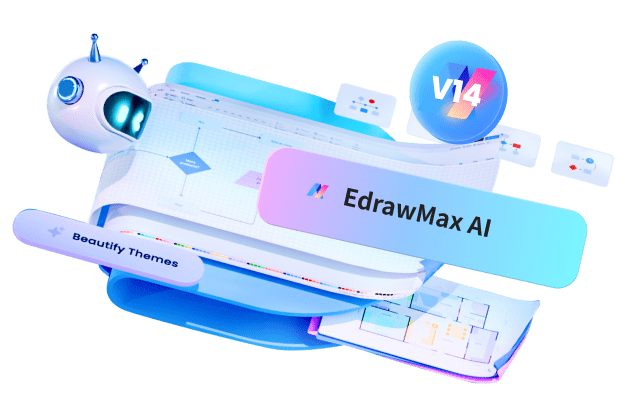In a world full of uncertainties, community-based disaster management is crucial. This article, 'Empowering Communities in Disaster Preparedness and Risk Mitigation,' introduces practical strategies to make communities stronger in the face of disasters. From early warnings to teamwork, learn how to stay safe during crises. Explore ways to empower individuals and create a safer environment for everyone.
In this article
Part 1. What is Disaster Risk Management?
Disaster risk management is the process of reducing the harmful impacts of natural disasters. It involves assessing risks, preventing disasters, preparing for emergencies, responding during disasters, and recovering afterward. The goal is to lessen the effects of hazards like storms, floods, and fires on communities. Risk management uses policies, planning, skills, and resources to make society more resilient to disasters.
Effective disaster management relies on collaboration between government agencies, organizations, and communities. It aims to limit long-term impacts and rebuild stronger after disasters strike.
Part 2. Understanding Community-Based Disaster Risk Management (CBDRM)

Community-based disaster risk management is an approach that engages local communities in identifying, analyzing, and reducing disaster risks. It aims to build resilience by empowering communities to take charge of disaster preparedness and response. The approach recognizes that communities are best placed to understand local hazards and vulnerabilities. It promotes community participation, capacity building, and linking local knowledge with scientific information.
In safeguarding communities, effective Disaster Risk Management (DRM) is paramount. Here are key tips to enhance your approach:
- Conduct Comprehensive Risk Assessments
- Establish Clear Communication Channels
- Prioritize Early Warning Systems
- Foster Community Engagement and Training
- Develop Robust Evacuation Plans
- Ensure Adequate Resource Stockpiling
- Implement Regular Drills and Simulations
These strategies form a robust framework for resilient disaster preparedness and response.
Part 3. Best Community-Based Disaster Risk Management Approaches for Businesses
Securing businesses from disasters requires smart Community-Based Disaster Risk Management (CBDRM) strategies. Here's what works best:
- Plan for Business Continuity and Recovery: Develop a clear plan to ensure operations can resume swiftly after a disaster, minimizing downtime and financial losses.
- Team up with Local Community and Authorities: Collaborate with local community leaders and government agencies to access resources, information, and support during emergencies.
- Train Employees for Emergencies: Equip your staff with the knowledge and skills to respond effectively in crises, ensuring their safety and that of your business.
- Assess and Reduce Risks: Identify potential hazards and vulnerabilities in your area, then implement measures to mitigate these risks and protect your business.
- Have a Response Plan in Place: Establish clear protocols for responding to emergencies, including evacuation procedures, communication channels, and designated roles.
- Diversify Suppliers and Resources: Avoid over-reliance on a single supplier or location. Diversifying resources and supply chains ensures continuity even if one source is disrupted.
These strategies collectively fortify your business against potential disasters, ensuring not only survival but continued success in the face of adversity.
Part 4. Creating a Risk Management Diagram Using EdrawMax
Using EdrawMax to map out a risk management process diagram is a key step for businesses seeking a thorough and organized approach to disaster preparation. This powerful software allows companies to visually lay out the full risk management workflow, helping identify possible threats, gauge vulnerabilities and put effective mitigation plans into action.
With EdrawMax's user-friendly design and vast template options, businesses can optimize their risk efforts, promoting a culture of readiness and adaptability. The diagram acts as a versatile roadmap, steering companies through each critical phase and ultimately strengthening the ability to safeguard operations, people, and resources when faced with unexpected crises.
Here are the steps to create a simple risk management process diagram using EdrawMax:
Step 1: Open the EdrawMax software on your computer. If you don't have it installed, you can download and install it from the official website.
Step 2: In EdrawMax, go to the "File" menu and select "New” if you wish to work on a blank canvas. Or switch to the “Template” category from the left menu pane and then search for "Risk Management" in the template library. Pick a suitable template to begin!

Step 3: Use the built-in shapes and symbols in the template. Drag and drop these elements onto the canvas to build your risk management diagram.

Step 4: Use connectors or arrows to indicate the flow or relationships between different elements. If needed, you can add icons or images further to illustrate certain aspects of the risk management process.

Step 5: To modify the font and colors, click on any entity and then choose "Styles”.

Step 6: Once you're satisfied with your risk management diagram, save it in a format of your choice. EdrawMax supports various file formats. You can also export it as an image or PDF for easy sharing.

Following these steps, you can create a clear and effective risk management diagram using EdrawMax. Remember to save your work regularly to ensure you don't lose any progress.
Conclusion
In conclusion, effective Disaster Risk Management is a collective effort that hinges on strategic planning, community engagement, and robust preparedness measures. With its intuitive interface and extensive template library, EdrawMax proves invaluable in creating clear and informative risk management diagrams. By adopting these strategies and leveraging tools like EdrawMax, communities can fortify their resilience, ensuring a safer, more secure future for all.




